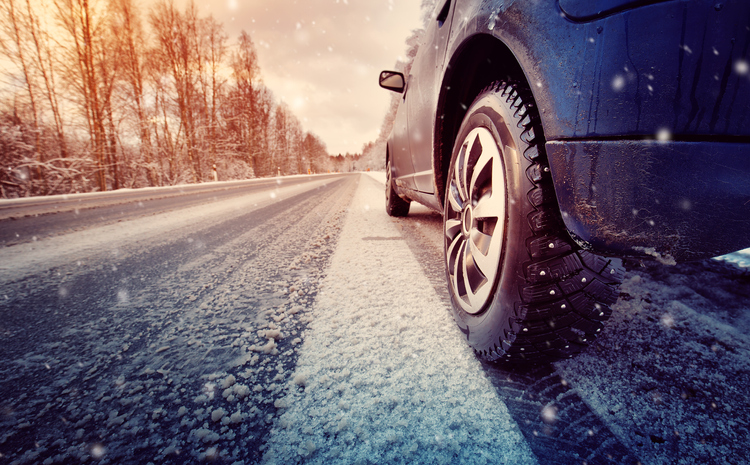With temperatures beginning to drop in Shreveport, it is important that you take the time to recognize how this fluctuation in weather can impact your driving. You see, when temperatures drop to about 32 degrees or lower and rain falls, there is a chance that black ice could form on the road. And if you weren’t aware, black ice is what makes driving in the winter so risky. Now, if you aren’t familiar with what black ice is or have only heard that it can cause an accident, let us explain what it is in a bit more detail below and highlight some ways to spot it.
Black ice forms “when it is raining and the air is at or below 32 degrees Fahrenheit at the surface” [Source: Accuweather]. When the rain hits the ground, it freezes upon impact and creates ice. Now, black ice didn’t exactly acquire its name because the ice itself is black, rather, it earned the name because it forms on the black roadway and blends in with it. Because of its “thin nature” and ability to blend in, black ice is “extremely difficult to spot.” Now, given that most drivers aren’t able to see black ice, that is, unless they know what to look for and where, we thought it would be a good idea to review with you the areas that it is most commonly found as well as signs that might indicate black ice has formed.
- Accuweather highlights that “the prime time for the development of this ice is between sunset and sunrise, when temperatures are typically the lowest.”
- If you are traveling at night, check your area’s weather conditions to see if there has been rainfall recently and if the temperatures are low enough to allow black ice to form.
- Look at the pavement before getting into your vehicle to see if you can spot any areas that might have black ice on it. The source states that if you see that the pavement is dry yet there are spots that appear to be dark and glossy, that may be black ice and those are the areas you want to avoid.
- Common places where black ice tends to form “are shaded or tree-covered parts of driveways and roadways due to the lack of sunlight.” Bridges and overpasses are also a “prime location” for black ice to form.
When a driver travels over black ice, there is a good chance they could lose control of their vehicle which is why you need to be extremely cautious while driving when the weather conditions permit for this ice to form. In fact, the United States Department of Agriculture shares some tips on how to drive on black ice which can be extremely beneficial for those of you who have never lived where temperatures drop to 32 degrees Fahrenheit or motorists who simply want to prepare themselves if they ever encounter this dangerous ice.
Because black ice has the potential to cause to you to engage in a serious or even fatal accident, you are encouraged to review the ways to spot it that are mentioned above and read through the tips the US Department of Agriculture has to offer so that you know what to do in the event you travel over it.
If the wintry weather conditions have already caused you to engage in an auto accident in Shreveport, LA and you have some questions pertaining to the damage your vehicle sustained along with the injuries you suffered, contact Shreveport, LA car crash attorney Ross Downs. Ross Downs is qualified and capable of addressing any and all of the questions you have and even provide you with the necessary representation if you are looking to recover compensation for the damages you incurred.
You can reach The Downs Law Firm at:
Bastrop Office
4214 Sterlington Road
Monroe, LA 71203
318-284-8551
Monroe Office
4214 Hwy 165 N.
Monroe, LA 71203
318-284-8551

